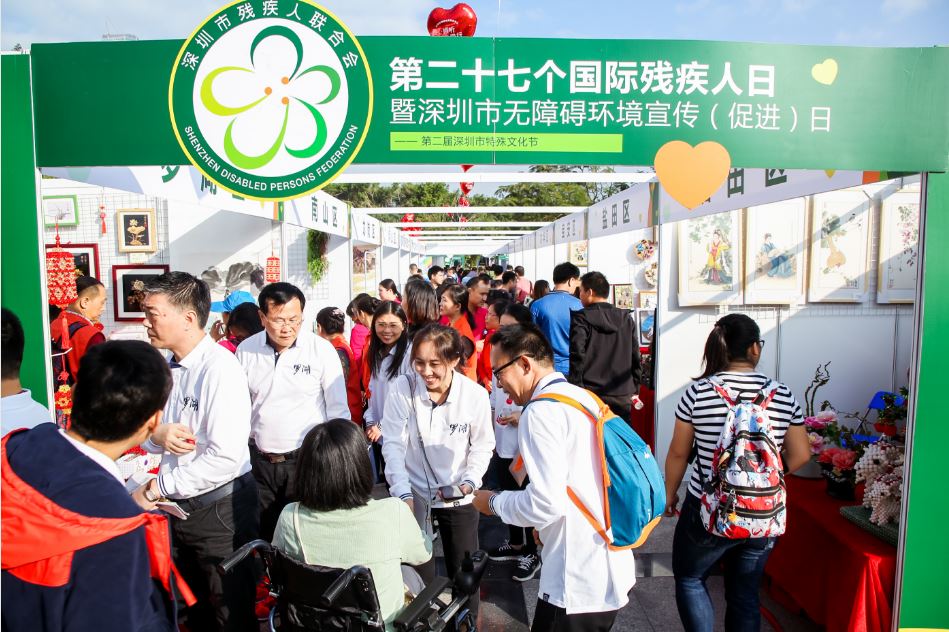SZ unveils strategy to build barrier-free city
Writer: Han Ximin | Editor: Holly Wang | From: Shenzhen Daily | Updated: 2019-12-05

An event is held at Shenzhen Central Park on Dec. 3, 2018 to promote no-barrier city and to mark the 27th International Day of Disabled Persons. Photos by Shenzhen Disabled Persons Federation
Shenzhen will form a sound aid mechanism for physically and mentally challenged persons before the end of 2025 and provide Shenzhen’s experience with no-barrier city construction to the world by 2030.
By 2035, Shenzhen will be a model city and a world-leading city in no-barrier, accessible city construction, according to a master plan for no-barrier city construction (2020-2035), which was released by Shenzhen Disabled Persons Federation on Tuesday, the 28th International Day of Disabled Persons.
The city has also designated Dec. 5 as the no-barrier city promotion day to promote awareness among the general public.
At the beginning of 2018, Shenzhen set a target of building a barrier-free city. In November last year, the city government unveiled an action plan for the construction of a no-barrier city on the basis of the proposals put forward by the federation.
“A barrier-free city is an open and inclusive city culture, a system with a connected, no-barrier environment and personalized services for physically challenged persons,” said Hou Yisha, chairwoman of the federation.
School education on raising the public’s awareness for treating physically and mentally challenged persons equally is an important part of the plan. Universities and vocational schools are encouraged to open majors related to barrier-free services to train professionals on the construction of barrier-free facilities.
Additionally, the city will set aside special funds to improve facilities for disabled persons in the neighborhoods, public areas and transport terminals. Public areas that don’t have facilities for disabled persons, especially government buildings, schools, social welfare centers, libraries, banks, shopping centers, movie theaters, museums, parks and tourist spots, will be renovated.
New housing estates and social welfare agencies must include facilities for disabled persons, or they will fail to gain approval at final inspections.
By the end of 2018, there were a total of 26,718 residents with disabilities in the city, and 7,281 of them were employed, accounting for 59 percent of the employable population that had reached employment age.
By the end of 2017, Shenzhen boasted 55 rehabilitation agencies serving physically and mentally challenged persons, four companies providing assisted rehabilitation devices and only three Braille reading rooms across the city’s libraries, according to Chinese media reports.